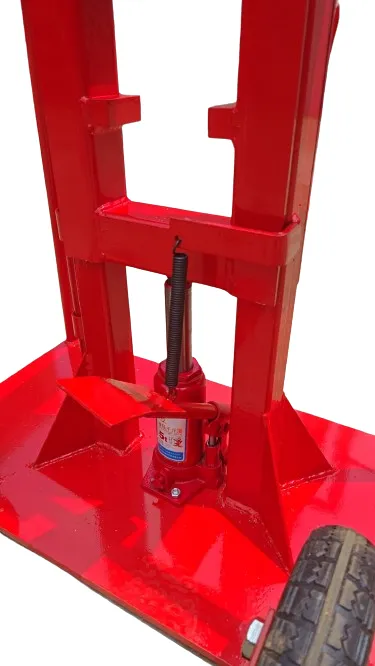
-
 Afrikaans
Afrikaans -
 Albanian
Albanian -
 Amharic
Amharic -
 Arabic
Arabic -
 Armenian
Armenian -
 Azerbaijani
Azerbaijani -
 Basque
Basque -
 Belarusian
Belarusian -
 Bengali
Bengali -
 Bosnian
Bosnian -
 Bulgarian
Bulgarian -
 Catalan
Catalan -
 Cebuano
Cebuano -
 Corsican
Corsican -
 Croatian
Croatian -
 Czech
Czech -
 Danish
Danish -
 Dutch
Dutch -
 English
English -
 Esperanto
Esperanto -
 Estonian
Estonian -
 Finnish
Finnish -
 French
French -
 Frisian
Frisian -
 Galician
Galician -
 Georgian
Georgian -
 German
German -
 Greek
Greek -
 Gujarati
Gujarati -
 Haitian Creole
Haitian Creole -
 hausa
hausa -
 hawaiian
hawaiian -
 Hebrew
Hebrew -
 Hindi
Hindi -
 Miao
Miao -
 Hungarian
Hungarian -
 Icelandic
Icelandic -
 igbo
igbo -
 Indonesian
Indonesian -
 irish
irish -
 Italian
Italian -
 Japanese
Japanese -
 Javanese
Javanese -
 Kannada
Kannada -
 kazakh
kazakh -
 Khmer
Khmer -
 Rwandese
Rwandese -
 Korean
Korean -
 Kurdish
Kurdish -
 Kyrgyz
Kyrgyz -
 Lao
Lao -
 Latin
Latin -
 Latvian
Latvian -
 Lithuanian
Lithuanian -
 Luxembourgish
Luxembourgish -
 Macedonian
Macedonian -
 Malgashi
Malgashi -
 Malay
Malay -
 Malayalam
Malayalam -
 Maltese
Maltese -
 Maori
Maori -
 Marathi
Marathi -
 Mongolian
Mongolian -
 Myanmar
Myanmar -
 Nepali
Nepali -
 Norwegian
Norwegian -
 Norwegian
Norwegian -
 Occitan
Occitan -
 Pashto
Pashto -
 Persian
Persian -
 Polish
Polish -
 Portuguese
Portuguese -
 Punjabi
Punjabi -
 Romanian
Romanian -
 Russian
Russian -
 Samoan
Samoan -
 Scottish Gaelic
Scottish Gaelic -
 Serbian
Serbian -
 Sesotho
Sesotho -
 Shona
Shona -
 Sindhi
Sindhi -
 Sinhala
Sinhala -
 Slovak
Slovak -
 Slovenian
Slovenian -
 Somali
Somali -
 Spanish
Spanish -
 Sundanese
Sundanese -
 Swahili
Swahili -
 Swedish
Swedish -
 Tagalog
Tagalog -
 Tajik
Tajik -
 Tamil
Tamil -
 Tatar
Tatar -
 Telugu
Telugu -
 Thai
Thai -
 Turkish
Turkish -
 Turkmen
Turkmen -
 Ukrainian
Ukrainian -
 Urdu
Urdu -
 Uighur
Uighur -
 Uzbek
Uzbek -
 Vietnamese
Vietnamese -
 Welsh
Welsh -
 Bantu
Bantu -
 Yiddish
Yiddish -
 Yoruba
Yoruba -
 Zulu
Zulu


Sep . 24, 2024 03:16 Back to list
Understanding Roller Chain Block Mechanisms and Their Applications in Various Industries
Understanding Roller Chain Blocks A Comprehensive Overview
Roller chain blocks, often simply referred to as chain blocks, are essential mechanical devices widely used in various industries for lifting and moving heavy objects. They consist of a chain, a block (or pulley), and a hook or other attachment mechanism. This versatile equipment is pivotal in construction, manufacturing, and maintenance tasks, where heavy lifting is frequently required.
How Roller Chain Blocks Work
The fundamental operation of a roller chain block revolves around the mechanical advantage provided by the chain and pulley system. When the operator pulls on the chain, it is redirected around a series of pulleys, which allows the user to lift large loads with relatively less effort. The use of a roller chain enhances the effectiveness of this mechanism; it minimizes friction, thus ensuring smooth movement of the load.
Chain blocks vary in size and lifting capacity, making them suitable for various applications. Commonly, they can lift loads ranging from a few hundred kilograms to several tons, which is ideal for different environments, from warehouses to construction sites.
Key Components
The primary components of a roller chain block include
roller chain block

1. Chain The roller chain is the core element that transmits the force applied by the user, allowing for lifting. 2. Block This housing unit encases the pulleys and the chain mechanism. It is often designed to withstand heavy loads and resist wear. 3. Hook The hook or attachment point is where the load is secured. It's designed to hold the weight of the load firmly and must meet strict safety standards. 4. Ratchet and Pawl Mechanism This mechanism allows for the load to be held in place once it is lifted, preventing it from descending inadvertently.
Applications in Various Industries
The utilization of roller chain blocks spans numerous sectors due to their reliability and effectiveness. In construction, they are indispensable for raising building materials, fixtures, and tools. In factories, they are employed to lift components and products during assembly or maintenance operations. Additionally, roller chain blocks are common in the shipping and logistics sectors, where they facilitate the movement of cargo and machinery.
Safety Considerations
While roller chain blocks are invaluable tools, safety must always be a priority when using them. Operators should ensure that the working load limit (WLL) is not exceeded, as overloading can lead to equipment failure and accidents. Regular inspections and maintenance are crucial for ensuring the chain block remains in good working condition. Furthermore, personnel should be trained in proper operating procedures to mitigate risks associated with heavy lifting.
Conclusion
Roller chain blocks are essential tools that significantly enhance efficiency in heavy lifting operations across various industries. Their simple yet effective design allows operators to harness mechanical advantages for lifting large loads with minimal effort. Understanding the components, applications, and safety measures associated with roller chain blocks is crucial for anyone involved in environments where heavy lifting is a regular task. With proper use and maintenance, these devices can provide reliable service for years, ensuring productivity and safety in the workplace.
Latest news
What Are Construction Tools and How Are They Used?
NewsJul.11,2025
Professional-Grade Duct Rodding Tools for Superior Cable Installation
NewsJul.11,2025
Enhancing Safety and Efficiency with Modern Hot Stick Solutions
NewsJul.11,2025
Empowering Cable Installation with Advanced Rodder Solutions
NewsJul.11,2025
Elevate Your Cable Installation Projects with Cable Pulling Tools
NewsJul.11,2025
Efficient Cable Handling Solutions: Cable Rollers for Sale
NewsJul.11,2025











